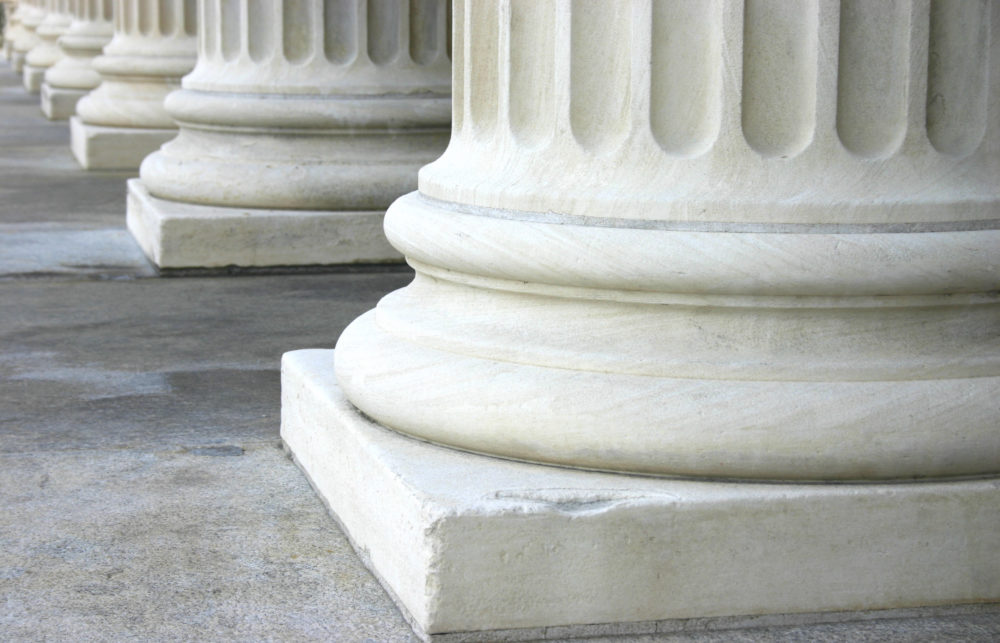Lawsuit Alleges Hernia Repair Complications Caused By Strattice Mesh, Then Worsened by Bard Ventralight ST Mesh
The lawsuit alleges both hernia repair mesh products are made of materials that are not compatible with human biology.

A Connecticut man indicates that he was left with painful and permanent injuries from hernia repair complications caused by two different defective products used to treat his recurrent hernia, first involving a Strattice biologic mesh, then a polypropylene Bard Ventralight ST mesh product.
The complaint (PDF) was filed by Pasquale Bernardo in the U.S. District Court for the District of Connecticut on January 6, pursuing claims against Allergan USA, Inc., Lifecell Cor., C.R. Bard, Inc. and Davol, Inc., for selling mesh products with known inherent dangers and defects.
Bernardo indicates that a Strattice Reconstructive Tissue Matrix was used during his first hernia repair in November 2011, even though Lifecell and Allergan were allegedly aware of scientific evidence that showed the pig mesh was “biologically incompatible” with human tissue and sometimes causes a dangerous negative reaction in certain people.
After the Strattice hernia mesh was removed, Bernardo underwent two additional recurrent hernia repairs, which failed to address the complications caused by the Strattice mesh. During a fourth hernia repair, Bard’s Ventralight ST mesh was implainted in 2015, which contained a synthetic polypropylene material. However, the lawsuit indicates Bard and Davol were aware that adverse reactions to polypropylene may cause adhesions, fragmentation, mesh shrinkage and other hernia repair complications.
“Defendants Lifecell, Allergan, Bard and Davol, knew or should have known that their Hernia Mesh Devices were unreasonably harmful, but failed in numerous ways to protect Plaintiff, other patients, and the general public from the harm caused by their Devices,” Bernardo’s lawsuit states.

Learn More About
Cases reviewed for problems with several types of hernia repair products.
Learn More About this Lawsuit See If You Qualify For CompensationStrattice Mesh Hernia Repair Problems
LifeCell Strattice mesh was first introduced to the market in 2008, as an alternative to synthetic mesh, since it is constructed from pig skin and preserved in a phosphate buffered aqueous solution. It is known as a cross-linked graft device, which is designed to chemically link the proteins in the tissue together. However, cross-linking has been linked to a risk of foreign body response and infections, according to allegations raised in the complaint filed by Bernardo, as well as a growing number of Strattice mesh lawsuits also being pursued by other individuals who received the same product.
From September 1990 through September 2020, the FDA received at least 450 Medical Device Reports (MDRs) involving Strattice hernia mesh complaints. Six of those reports included patient deaths, more than 340 were injury reports, and at least 107 indicated malfunctions of the mesh.
According to allegations raised in the litigation, Lifecell and Allergan knew about problems with their Strattice mesh design since at least 2010, after receiving a number of reports of doctors having to remove failed and infected mesh from patients.
Bard Hernia Mesh Complications
In addition, C.R. Bard, which makes the Ventralight mesh, currently faces more than 8,000 product liability claims brought throughout the federal court system, each involving similar claims that plaintiffs suffered painful and debilitating complications due to defective polypropylene mesh products sold in recent years, including the Ventralight, Bard Ventralex, Bard Perfix, Bard 3DMax and other similar mesh systems.
Plaintiffs allege the design problems with the polypropylene mesh caused them to experience severe abdominal pain, infections, adhesions, erosion and other complications that often result in the need for additional surgery to remove the failed hernia patch.
Given common questions of fact and law raised in the complaints, the federal litigation has been centralized before U.S. District Judge Edmund A. Sargus in the Southern District of Ohio for the past few years, where the parties have engaged in coordinated discovery in preparation for a series of early trial dates, which are intended to help gauge how juries are likely to respond to certain evidence and testimony that will be repeated throughout the claims.
Get more articles like this sent directly to your inbox.
"*" indicates required fields






0 Comments